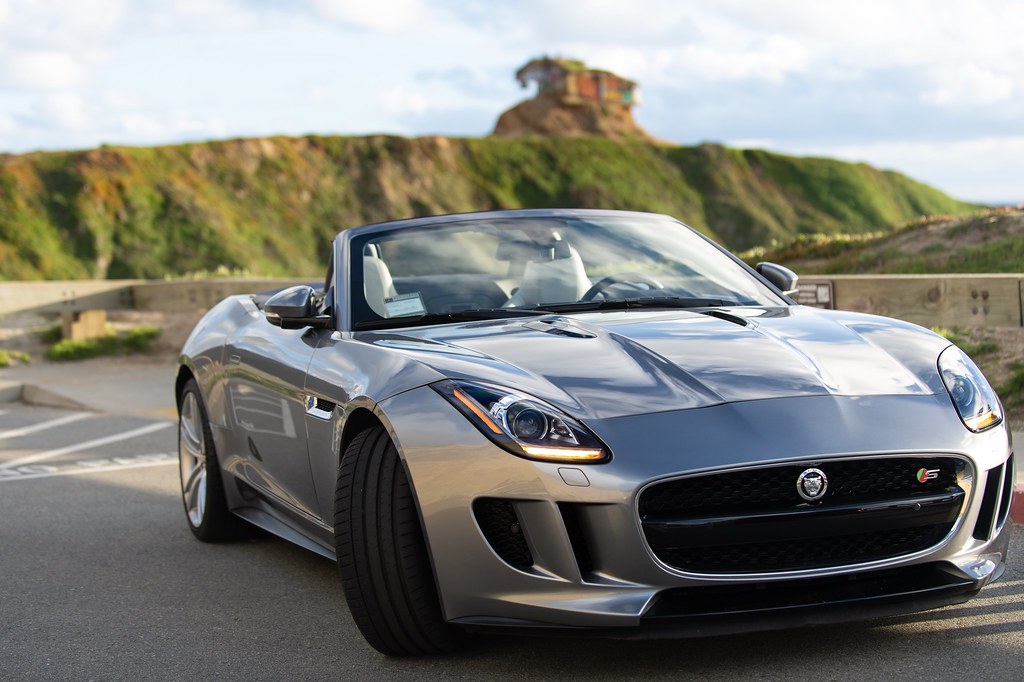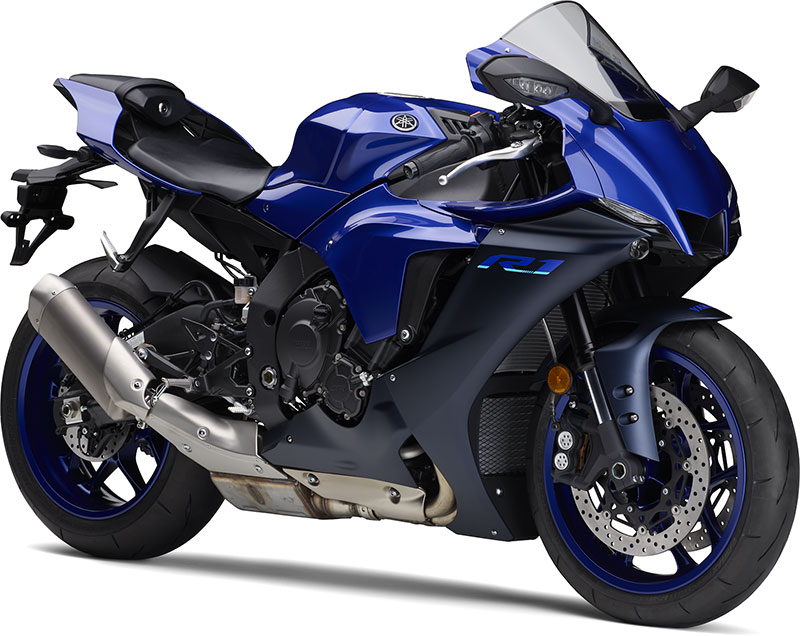
In the vibrant world of motorcycling, few topics spark as much debate and apprehension as the odometer reading on a potential purchase. Many riders instinctively recoil at the thought of a used motorcycle showing upwards of 50,000 miles, equating high numbers with impending mechanical failure and costly repairs. This widespread hesitance often stems from an outdated understanding of motorcycle engineering and a perception that older bikes are simply nearing the end of their useful lives. However, modern motorcycles are robust machines, often built to comfortably withstand hundreds of thousands of miles, provided they receive the proper care and attention.
Indeed, the journey of a motorcycle doesn’t end when the odometer crosses an arbitrary threshold. When evaluating a bike that has already seen 50,000 miles or more, it is absolutely critical to look beyond that single number. Numerous other factors play a far more significant role in the overall condition and remaining lifespan of the machine. Elements such as a meticulous maintenance history, the specific riding conditions it endured, the habits of its previous owners, and even how and where the bike was stored can profoundly influence its current state and future reliability.
This comprehensive guide aims to arm you, the discerning rider, with the objective insights and practical advice necessary to navigate the complexities of high-mileage motorcycles. Adopting a data-driven, consumer-focused approach, we will delve into what high mileage truly means, dissect the factors that contribute to wear and tear, dismantle common myths, and provide actionable strategies for monitoring and assessing these bikes. Our goal is to empower you to make an informed decision, confidently enjoying many more miles on a well-understood, high-mileage motorcycle without unnecessary worries.
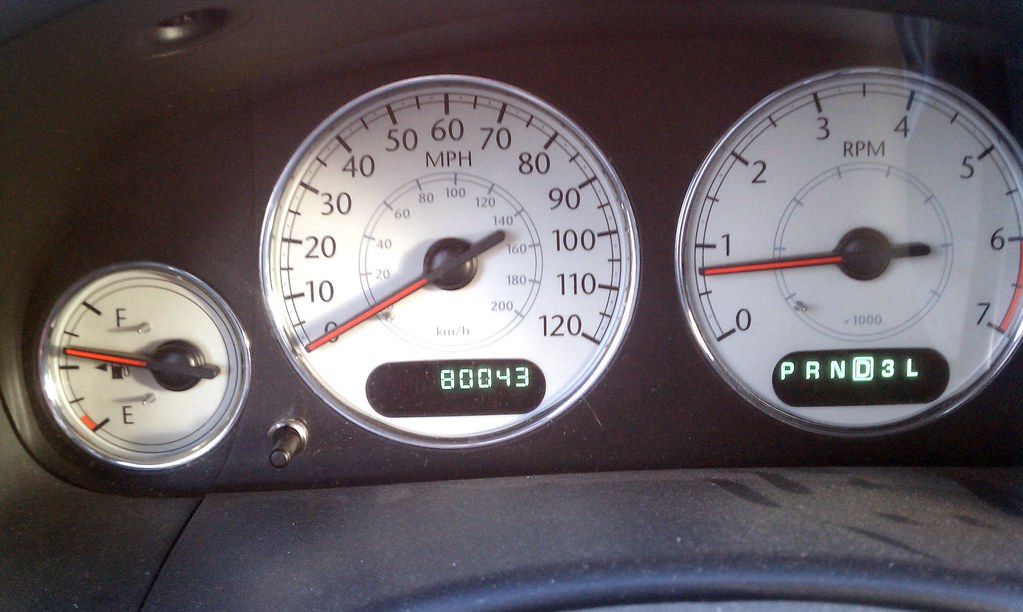
1. **Decoding High Mileage: Unveiling the Secrets Behind Motorcycle Mileage**When embarking on the purchase of a used motorcycle, the mileage displayed on the odometer stands out as a primary indicator of the bike’s journey and potential wear. This figure offers a glimpse into the overall usage and historical stresses the machine has experienced, providing a preliminary idea of its potential reliability and remaining lifespan. While a common guideline suggests that motorcycles exceeding 20,000 miles are generally categorized as high-mileage, it is crucial to understand that this is not an absolute measure. The definition of “high mileage” is inherently relative, fluctuating significantly based on the specific make and model of the motorcycle, as well as the unique conditions and type of riding it has been subjected to throughout its life.
To illustrate this relativity, consider that some motorcycle models, renowned for their robust engineering and durable components, are perfectly capable of surpassing the 50,000-mile mark and even cruising past 100,000 miles without encountering major mechanical issues, provided they have been diligently maintained. Conversely, other bikes, particularly those designed for high-performance or specialized riding, might exhibit considerable wear and tear much earlier, sometimes even around the 20,000-mile threshold. This disparity underscores that mileage alone cannot be the sole determinant of a motorcycle’s condition or its inherent value.
Therefore, it becomes imperative for a prospective buyer to delve deeper than merely glancing at the numerical display. Beyond the odometer reading, a comprehensive evaluation must account for critical factors such as a consistent record of regular maintenance, the prevailing riding conditions the bike navigated (e.g., highway cruising versus aggressive city stop-and-go traffic), and even the specific type of engine oil consistently used. These details can dramatically influence a motorcycle’s longevity and its current state of health, often more so than the cumulative miles.
For instance, a motorcycle predominantly used for long, steady highway rides might exhibit less wear on its engine and transmission components compared to a bike that has been subjected to frequent short commutes, characterized by numerous starts, stops, and accelerations in dense city traffic. When contemplating a high-mileage motorcycle, a thorough physical inspection is non-negotiable. Look meticulously for tangible signs of wear such as degraded tires, instances of rust on fasteners or frame components, or any noticeable fluid leaks. Furthermore, a comprehensive service history can provide invaluable documentation of the care and attention the bike has received over the years, acting as a testament to its potential reliability. While high mileage undoubtedly warrants a careful examination, it does not automatically disqualify a motorcycle from being a worthwhile and reliable investment.
Read more about: Beyond the Garage: 15 Vintage Cars That Are Secretly Skyrocketing in Value Right Now
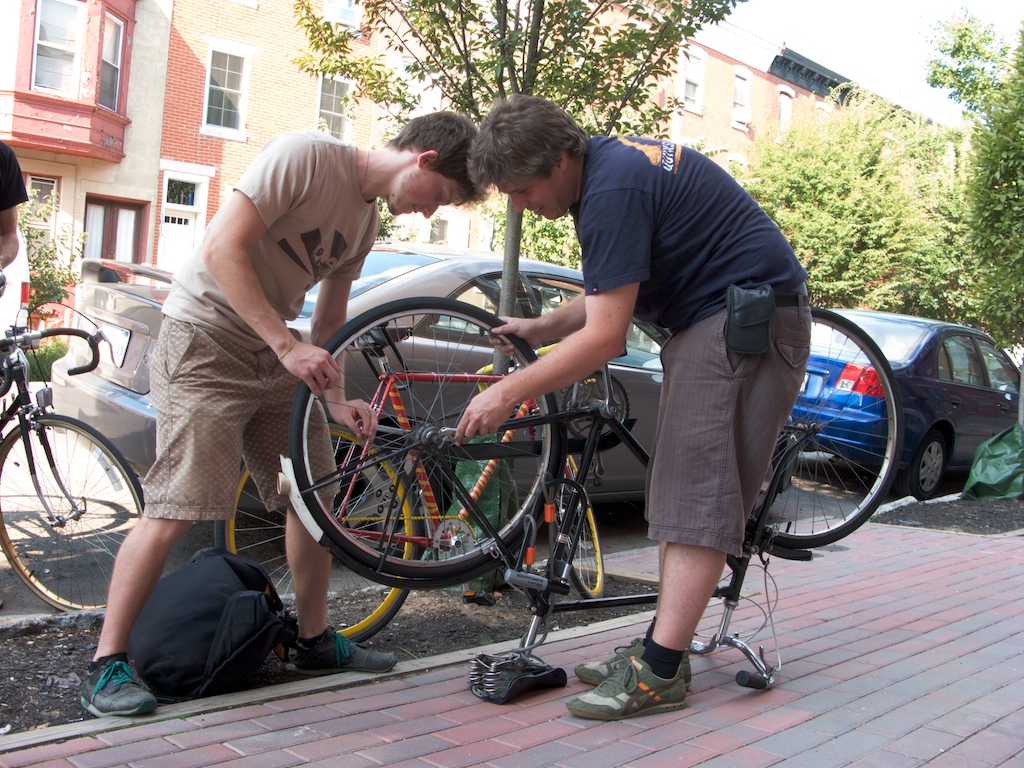
2. **Understanding Wear and Tear: Factors Contributing to High Mileage Motorcycles**Motorcycles are engineered to be resilient machines, designed to conquer countless miles and endure diverse road conditions. However, like any mechanical marvel, they are not impervious to the effects of time and use. The accumulation of miles inevitably leads to wear and tear, impacting various components and systems. Understanding the specific factors that accelerate or mitigate this degradation is paramount for both owners and prospective buyers of high-mileage motorcycles, helping to decipher how much wear is truly “too much” for a given machine.
One of the most profound influences on a motorcycle’s mileage accumulation and its associated wear and tear is its **maintenance regimen**. Consistent, thorough servicing is absolutely critical for the smooth operation and extended lifespan of any motorcycle, regardless of its initial build quality. Neglecting routine maintenance tasks—such as the timely replacement of engine oil and filters, periodic spark plug changes, regular chain adjustments, and comprehensive brake inspections—can precipitate a cascade of issues. Such omissions directly contribute to increased friction, inefficient combustion, and accelerated degradation of critical components, leading to premature wear and a motorcycle that feels “older” than its odometer suggests.
Equally impactful are the **riding conditions** a motorcycle has primarily encountered. The environment in which a bike operates exerts substantial strain on its engine, chassis, and various other components. For example, consistent riding in extreme weather, be it the intense heat of summer or the freezing cold of winter, can place undue stress on engine cooling systems, seals, and electrical components. Similarly, a history of frequent off-roading or prolonged exposure to rough, unpaved terrain can significantly accelerate wear on the suspension, frame, wheel bearings, and drive train. These demanding conditions can induce fatigue and damage far more rapidly than sustained, smooth highway cruising.
Furthermore, the **riding style** adopted by the owner plays a crucial role in the longevity of a motorcycle. An aggressive riding approach, characterized by frequent rapid acceleration, sustained high-speed operations, and abrupt, hard braking, imposes considerable additional stress on the engine, transmission, and braking system. Such practices can lead to faster clutch wear, increased stress on engine internals, and accelerated brake pad and rotor degradation. In contrast, a rider who practices smooth acceleration, anticipates road conditions, and employs gradual, controlled braking techniques significantly reduces mechanical stress, thereby helping to extend the lifespan of their motorcycle’s vital components.
Finally, the **quality of parts** utilized during any repairs and maintenance cycles is a critical determinant of a motorcycle’s enduring performance. Opting for genuine manufacturer (OEM) parts or high-quality aftermarket replacements is essential for maintaining the bike’s integrity and ensuring longevity. The allure of cheaper, substandard parts might offer immediate cost savings, but they often wear out much more quickly, potentially leading to subsequent failures and greater expenses down the line, thus inadvertently contributing to a higher effective mileage. It is also a salient point that older motorcycles, having accumulated more miles, inherently tend to necessitate more frequent maintenance and potentially more extensive repairs compared to their newer counterparts, regardless of brand or model. Diligent monitoring and prompt attention to emerging issues are key to ensuring a smooth and reliable ride for many years.
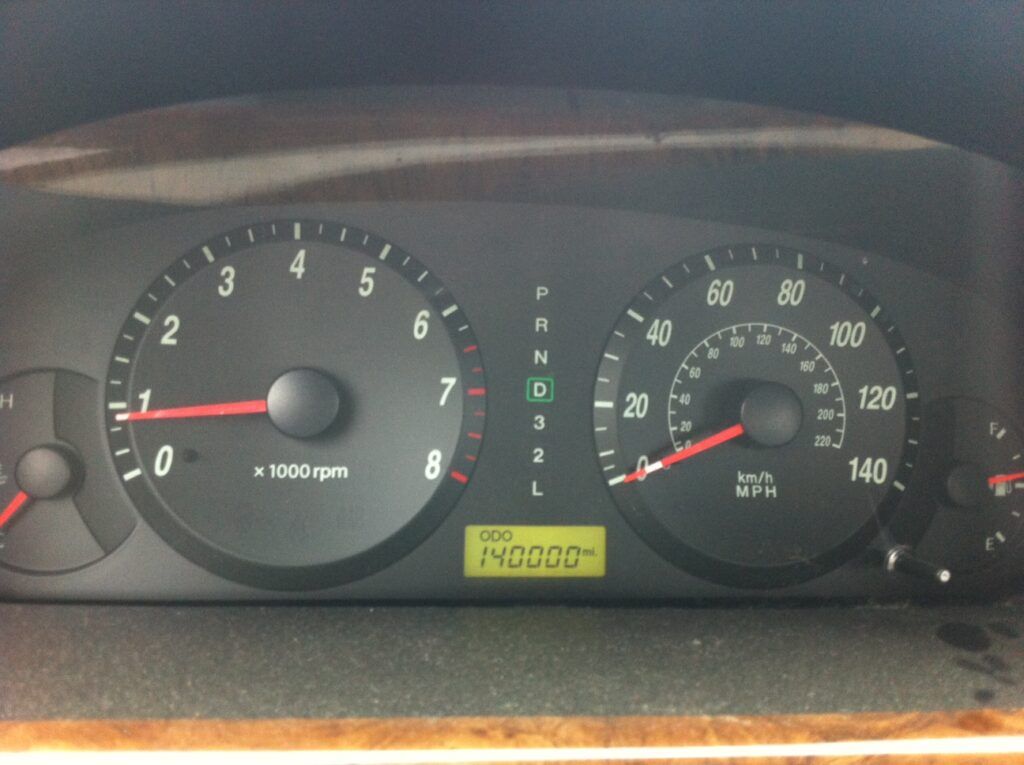
3. **Mileage Myths Debunked: Separating Fact from Fiction**Among the many inquiries that echo through the motorcycle community, the question, “What truly constitutes high mileage for a motorcycle?” is one of the most frequently posed. A pervasive concern among many riders is the perception that their cherished machine is inevitably approaching its operational limits once its odometer registers a specific, often arbitrary, high figure. However, a nuanced understanding reveals that the reality of high mileage for a motorcycle is far more complex, dependent on a confluence of interacting factors. It’s time to confront and dismantle some of the common misconceptions that cloud the discussion around motorcycle mileage, separating factual insights from enduring fictions.
One of the most significant factors influencing what is deemed “high mileage” is the **type of bike and its maintenance history**. Different classes of motorcycles are engineered with distinct purposes and expected lifespans. For instance, cruisers and touring motorcycles are specifically designed for long-distance travel, featuring engines and components built for durability and extended operational hours. These bikes are inherently capable of accommodating substantially higher mileage totals with grace. Conversely, sport bikes and dirt bikes, which are typically pushed to their performance limits and subjected to more strenuous riding conditions, generally have a shorter expected lifespan under heavy use. Crucially, irrespective of the motorcycle’s inherent design, rigorous and consistent maintenance and proper care emerge as paramount contributors to a bike’s longevity. A compelling example illustrates this: a meticulously maintained motorcycle with 50,000 miles on its odometer can often be considered in a superior operational state, or even “lower mileage” in terms of its effective wear, compared to a neglected bike that has only accumulated 20,000 miles.
Another vital consideration in assessing mileage is the **engine size and the specific make** of the motorcycle. Generally, motorcycles equipped with larger displacement engines tend to possess greater durability and are engineered to comfortably endure higher mileage over their lifespan. The inherent robustness of these larger powerplants often means they are less stressed under typical operating conditions compared to smaller engines working harder. Furthermore, the brand and the overall quality of manufacturing play a pivotal role. Reputable motorcycle brands, renowned for their superior build quality, precision engineering, and rigorous testing standards, often yield bikes with enhanced longevity and a greater capacity for higher mileage accumulation. This speaks to the consistent quality of materials and assembly processes employed by leading manufacturers.
Finally, the **riding style and the prevailing riding conditions** significantly impact a motorcycle’s enduring reliability. An aggressive riding style—characterized by frequent rapid accelerations, sustained periods of high-speed operation, and abrupt, forceful braking maneuvers—places considerable additional stress on the engine, transmission, brakes, and suspension components. Such demanding usage inevitably leads to quicker wear and tear. Similarly, continuous exposure to harsh environmental conditions, such as extreme heat, prolonged cold, or corrosive elements, can accelerate the degradation of materials and fluids, thereby shortening a motorcycle’s effective lifespan. However, if a rider consistently practices responsible riding habits and operates their bike primarily in moderate conditions, even a motorcycle with a high odometer reading can continue to provide many more years of reliable service and enjoyable journeys.
It is vital for riders to emancipate themselves from the restrictive notion that high mileage automatically signifies an impending mechanical doom. The true lifespan and reliability of a motorcycle are the result of an intricate interplay of its type, the diligence of its maintenance, the specifications of its engine and manufacturer, and the nuances of how and where it is ridden. By embracing this holistic perspective, and actively caring for your machine and riding responsibly, you can substantially extend its operational life, ensuring that the thrill of the open road remains accessible for countless miles to come.
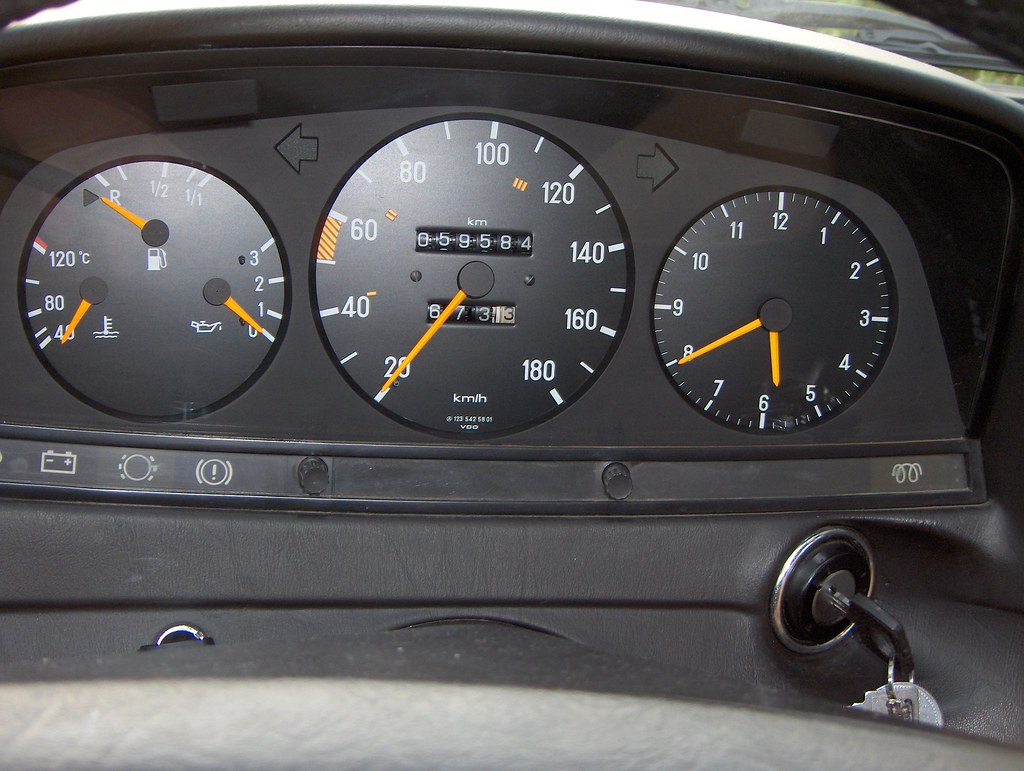
4. **Keeping Track: Best Practices for Monitoring Motorcycle Mileage**For every motorcycle enthusiast, diligently keeping track of your bike’s mileage is an absolutely crucial practice, serving multiple vital functions beyond simply knowing how far you’ve ridden. This continuous monitoring is not only essential for pinpointing opportune moments to schedule routine maintenance and service appointments, but it also provides invaluable insights into the overall health, performance trajectory, and potential needs of your machine. Understanding your motorcycle’s mileage accumulation, particularly in the context of what constitutes “high mileage,” forms the bedrock of proactive and responsible ownership. Let’s explore some best practices for effectively monitoring and interpreting your motorcycle’s mileage data.
The most fundamental practice is to **regularly check your odometer**. Developing the habit of quickly glancing at your motorcycle’s odometer before initiating and after concluding each ride is a simple yet effective way to maintain an ongoing awareness of its mileage. This consistent observation will provide you with a reliable, rough estimate of the distances you cover and allow you to systematically track your bike’s cumulative mileage over time. This basic, yet often overlooked, habit forms the foundation of all other mileage-related monitoring efforts and helps you stay connected to your motorcycle’s usage patterns.
Another critical aspect when evaluating mileage is to **consider the age of your motorcycle**. While a generalized benchmark suggests that motorcycles surpassing 20,000 miles are often classified as having high mileage, this classification is notably subjective and highly dependent on both the chronological age and the prevailing condition of your bike. The significance of mileage can vary considerably based on a multitude of factors, including the specific make and model of your motorcycle, the characteristic terrain you typically traverse, and, perhaps most importantly, the consistency and quality of the maintenance you afford your bike. A younger bike with higher miles might indicate heavy, but potentially well-maintained, usage, while an older bike with very low miles could suggest prolonged periods of inactivity, bringing its own set of potential problems.
Furthermore, **paying close attention to manufacturer-recommended maintenance schedules** is indispensable. Different motorcycle models come with distinct maintenance intervals, which explicitly outline when specific tasks—such as oil changes, tire rotations, and spark plug replacements—should be performed. By rigorously adhering to your motorcycle’s recommended maintenance schedule and meticulously logging each completed service, you achieve a dual benefit. Not only do you ensure the timely execution of routine upkeep, which is vital for longevity, but you also create a comprehensive service history. This detailed record is invaluable for tracking both regularly scheduled maintenance and for proactively identifying any potential issues that may arise as a consequence of accumulating high mileage.
To elevate your mileage tracking to an accurate and comprehensive level, it is highly recommended to **keep a dedicated mileage log**. This can be a simple notebook, a digital spreadsheet, or a specialized mobile application. In this log, systematically record the date, the starting mileage before a ride, the ending mileage after a ride, and a brief note on the purpose of each journey. Such a meticulous log serves as an exceptionally useful reference tool for future evaluations, aiding in the precise calculation of fuel economy over time, and proving particularly advantageous when you decide to sell your motorcycle, as it provides undeniable proof of its usage and care. Ultimately, when confronting the reality of high mileage, it is the unwavering commitment to proper maintenance and regular, thorough inspections that stands as the most potent safeguard for ensuring the enduring longevity and consistent performance of your cherished motorcycle for countless years and miles ahead.
Read more about: The Gears of Time: Unearthing 14 Criminally Underrated Rides That Deserve Their Moment in the Sun
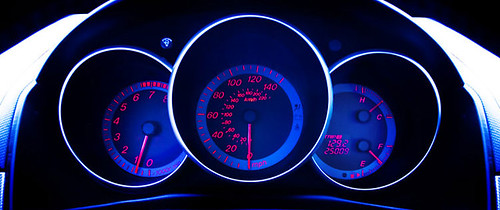
5. **Assessing Performance: How High Mileage Affects Motorcycle Functionality**One of the frequently asked questions among motorcycle enthusiasts is how mileage specifically impacts a motorcycle’s functionality. While the number on the odometer isn’t the sole determinant of a bike’s health, accumulating significant mileage can indeed affect its operational performance. Understanding this impact is crucial for both current owners looking to prolong their bike’s life and prospective buyers evaluating a high-mileage machine.
Motorcycles are generally built to last, with many models designed to achieve between 50,000 to 100,000 miles of reliable service. However, this average range is greatly influenced by several critical factors, including the brand’s established reputation for durability, the consistency and quality of its maintenance history, and the specific riding habits of its owners. It is important to emphasize that mileage alone does not unilaterally dictate a motorcycle’s overall lifespan; rather, the holistic care and attention it receives play a far more significant role in its enduring functionality and reliability.
As a motorcycle ages and accrues miles, certain indicators of wear and tear may begin to manifest, signaling potential areas of concern. Riders might experience increased vibration, which can be a symptom of engine imbalance, worn engine mounts, or compromised wheel bearings. A noticeable reduction in power delivery, often accompanied by increased oil consumption or visible oil leaks, could point to internal engine wear, such as piston ring degradation or valve seal issues. Regular, thorough inspections of key components, including the engine, drive chain, braking system, and suspension, are indispensable for detecting these early warning signs. Addressing any identified issues promptly through appropriate maintenance or repair can significantly extend the operational life of a motorcycle and prevent more severe problems from developing.
Ultimately, maximizing a motorcycle’s functionality, irrespective of its accumulated mileage, hinges on a diligent and comprehensive regimen of maintenance and care. This includes strictly adhering to the manufacturer’s recommended service intervals for tasks such as fluid changes (engine oil, brake fluid, coolant), consistent chain adjustments, and periodic inspection and replacement of spark plugs and filters. Furthermore, proper storage conditions, routine cleaning, and protecting the motorcycle from harsh weather elements are all vital practices that contribute significantly to its longevity and sustained performance, ensuring many more miles of smooth riding.
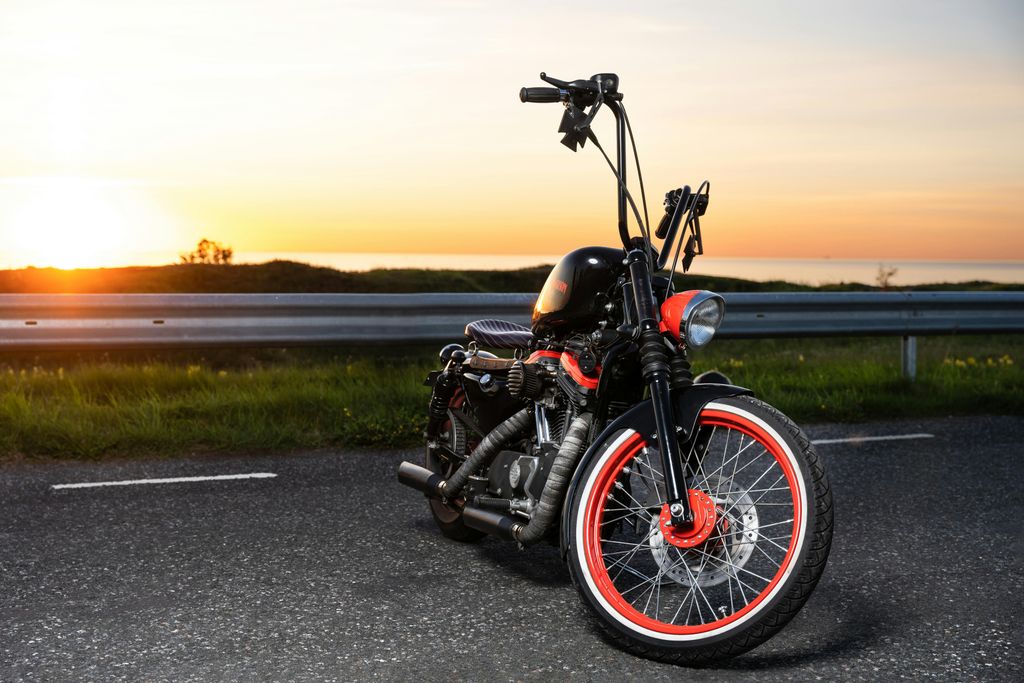
6. **Putting It in Perspective: Comparing High Mileage Milestones for Different Motorcycle Brands**For many riders, achieving high mileage milestones on their motorcycles is a testament to their machine’s endurance and a source of pride. However, what constitutes “high mileage” can be a surprisingly variable metric, often depending significantly on the specific motorcycle brand and model. This variation underscores the importance of understanding brand-specific durability benchmarks rather than relying on a universal, arbitrary number.
Take, for instance, Harley-Davidson motorcycles, renowned for their robust engines and enduring appeal. Many riders typically consider anything exceeding 50,000 miles as high mileage for a Harley. Yet, it is not uncommon to find owners reporting that their Harley-Davidson machines have comfortably surpassed the 100,000-mile mark, with some even reaching 150,000 miles or more, provided they receive meticulous care and timely maintenance. This highlights the inherent durability built into these iconic bikes.
Honda motorcycles, globally recognized for their exceptional reliability and engineering precision, frequently demonstrate an impressive capacity to accumulate mileage with relative ease. For Honda bikes, achieving the 70,000-mile milestone is often viewed as a significant accomplishment. A substantial number of Honda enthusiasts have even reported pushing their bikes well beyond 150,000 miles, showcasing the brand’s consistent commitment to long-term performance and dependability across various models, from cruisers to sport touring machines.
BMW motorcycles, celebrated for their blend of performance, advanced technology, and longevity, often prompt riders to consider anything above 60,000 miles as high mileage. However, the resilient design and high-quality components commonly found in BMW bikes mean that many adventurous owners routinely travel well over 100,000 miles, and in some cases, even beyond 200,000 miles, on their trusted machines. This speaks to BMW’s engineering philosophy focused on enduring capability.
Similarly, Yamaha motorcycles, which are highly valued for their versatility and durable construction across a broad spectrum of models, typically see anything over 40,000 miles considered as high mileage by their community. Nevertheless, a significant number of Yamaha riders proudly boast impressive mileages of 80,000 miles or substantially more, reflecting the brand’s consistent delivery of dependable and long-lasting two-wheelers capable of extended service under varied riding conditions.
It is vital to recognize that these mileage figures, while informative, function primarily as general benchmarks. The actual longevity and sustained performance of any motorcycle, regardless of its brand, are ultimately influenced by a complex interplay of factors including its maintenance history, the owner’s riding style, and the specific model’s inherent design characteristics. For the most accurate assessment of a particular make and model, consulting with experienced mechanics, reputable motorcycle forums, and fellow riders can provide invaluable, real-world insights into expected high-mileage capabilities and potential considerations.
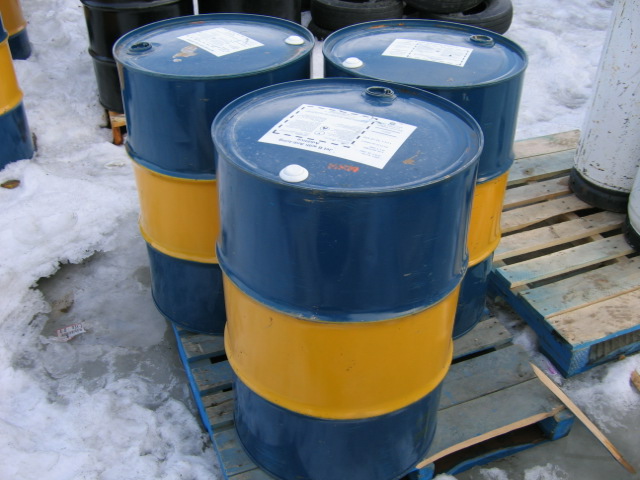
7. **Extending the Lifetime: Tips for Maximizing Mileage and Enhancing Motorcycle Longevity**For any motorcycle enthusiast, the aspiration is to ensure their cherished machine delivers reliable performance for as many miles as possible. Extending the lifetime of a motorcycle, especially as it accumulates significant mileage, is not merely about preventing breakdowns; it’s about preserving the joy and freedom that riding offers. Implementing a few key practices can dramatically maximize mileage and enhance the overall longevity of your two-wheeled companion, transforming it from a mere mode of transport into a long-term investment in adventure.
The cornerstone of motorcycle longevity is a rigorous and consistent **regular maintenance schedule**. It is absolutely crucial to adhere strictly to the manufacturer’s recommended maintenance intervals as outlined in your owner’s manual. This includes performing timely oil changes with the correct type and viscosity of oil, regularly checking and topping off all fluid levels (such as brake fluid, coolant, and hydraulic clutch fluid), inspecting and adjusting chain tension, and lubricating all moving parts. Such routine service not only keeps your bike running optimally but also serves as a proactive measure, allowing for the early detection and resolution of potential issues before they escalate into costly problems, thereby extending the life of critical components.
The **quality of fuel and proper fueling habits** also play a surprisingly significant role in your motorcycle’s long-term health. Always opt for high-quality fuel from reputable gasoline stations to ensure optimal engine performance and to prevent the accumulation of harmful deposits within the fuel system. Avoiding low-grade or potentially contaminated fuel is paramount. Furthermore, be mindful of your fueling habits: never overfill the tank, as this can lead to issues with the evaporative emissions system, and avoid consistently riding on an almost empty tank, which can place undue strain on the fuel pump and risk drawing sediment into the fuel lines. Consistent use of appropriate fuel contributes directly to the efficiency and durability of your engine over many miles.
Another critical factor is the adoption of **mindful riding practices**. The way a motorcycle is ridden has a direct and profound impact on the wear and tear experienced by its engine, transmission, brakes, and suspension. Aggressive riding habits—characterized by frequent rapid acceleration, abrupt and harsh braking, and sustained periods at very high RPMs—impose unnecessary and excessive strain on these vital components, leading to accelerated degradation. Conversely, a smooth, controlled riding style, which emphasizes gradual acceleration, anticipating road conditions, and employing progressive braking techniques, significantly reduces mechanical stress. This not only enhances fuel efficiency but also markedly extends the lifespan of crucial parts, allowing your bike to effortlessly accumulate more miles with less wear.
Additionally, paying attention to **tire pressure monitoring** and the **timely replacement of worn-out parts** are indispensable for a high-mileage motorcycle. Maintaining correct tire pressure ensures safe handling and extends tire life, while promptly replacing components like brake pads, chain, sprockets, and suspension parts when they show signs of wear prevents secondary damage to other systems. These combined efforts form a comprehensive strategy for safeguarding your motorcycle’s performance and ensuring it remains a reliable companion for countless journeys ahead, proving that proactive care truly pays dividends in longevity.
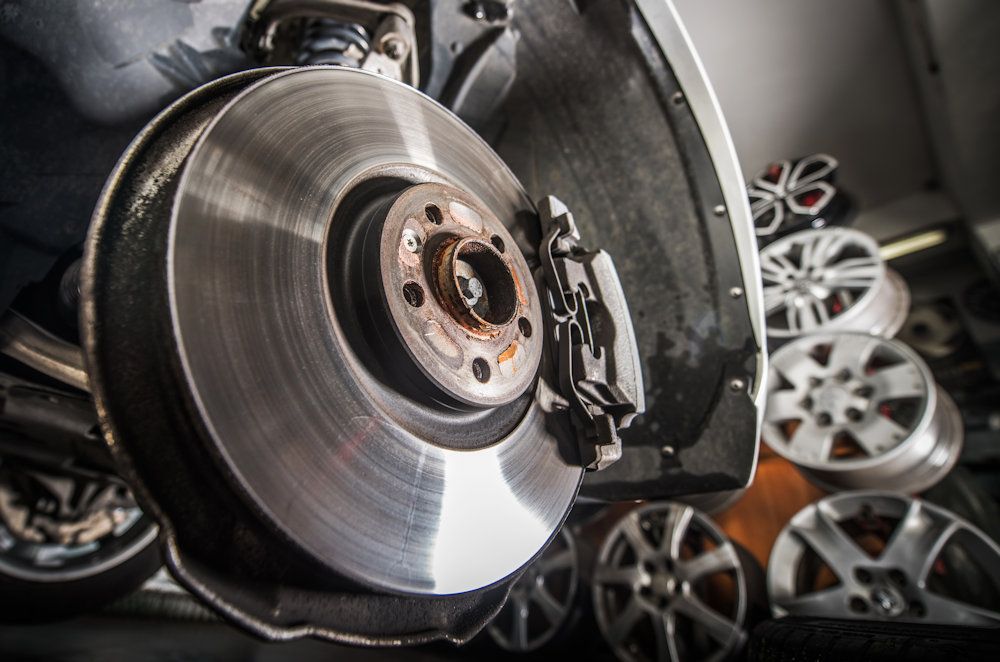
8. **Evaluating Cost vs. Mileage: When to Repair or Replace a High Mileage Motorcycle**As a motorcycle accumulates significant mileage, typically exceeding 50,000 miles, owners inevitably face a critical decision: should they continue investing in repairs, or is it time to consider replacing their trusted machine? This evaluation of cost versus mileage is a complex one, deeply influenced by financial considerations, emotional attachment, and the practical realities of ongoing maintenance. While 50,000 miles might be considered high mileage for many models, it does not automatically signify the end of a bike’s useful life, especially if it has been meticulously maintained.
The initial step in this decision-making process involves a thorough assessment of the **overall condition** of your high-mileage motorcycle. Is the bike still running smoothly, or have frequent breakdowns and an increasing number of minor or major repair needs become a recurring issue? A motorcycle that has consistently received proper maintenance, exhibits minimal signs of excessive wear and tear beyond what is expected for its mileage, and still performs reliably is generally a stronger candidate for continued repair. Conversely, a bike plagued by persistent, unrelated issues may signal a deeper, systemic degradation that makes replacement a more pragmatic option.
Closely tied to the bike’s current state is its **maintenance history**. A comprehensive and consistent service record acts as invaluable documentation, demonstrating the level of care and preventative maintenance the motorcycle has received throughout its life. A bike with documented regular oil changes, timely inspections, and records of past major repairs indicates a history of responsible ownership, making the prospect of further investment in repairs more justifiable. This historical data provides a crucial level of confidence that the bike’s core components have been looked after, potentially reducing the likelihood of unexpected catastrophic failures.
Another critical factor is the **repair costs** associated with current and anticipated issues. It is prudent to obtain detailed estimates for any necessary repairs from trusted, reputable mechanics. These estimated costs should then be carefully compared against the current market value of your motorcycle. If the cumulative repair costs approach or significantly exceed a substantial percentage of the motorcycle’s current market value—for instance, if $4,000 in repairs is needed on a bike valued at $7,000, as might be the case for a Suzuki GSX-R1000—it often becomes more financially sound to consider replacing the motorcycle. However, for repairs such as $500 on a Honda CRF250L valued at $4,000, continuing with repairs would likely be the more sensible choice.
Furthermore, consider the **potential future expenses** that might arise from your high-mileage motorcycle. Is the bike nearing a point where major, costly components—such as the engine, transmission, or suspension system—are likely to fail or require significant overhaul? If the forecast indicates a series of expensive repairs on the horizon, the cumulative cost of ownership could quickly outweigh the benefits, making replacement a more economically viable long-term strategy. This forward-looking assessment helps in avoiding the trap of continuously sinking money into a depreciating asset with diminishing returns.
Ultimately, the choice to repair or replace a high-mileage motorcycle is highly individualized, reflecting a unique blend of financial prudence and personal attachment. There is no one-size-fits-all answer, as each situation presents its own set of circumstances. By meticulously weighing the overall condition, documented maintenance history, current and projected repair costs against the bike’s market value, and your personal satisfaction with the motorcycle, you can make a confident and informed decision that aligns with both your budget and your riding aspirations.
In the ever-evolving landscape of motorcycling, the journey of a bike with 50,000 miles is far from its final destination. As we’ve explored, what truly defines a high-mileage motorcycle isn’t solely the number on its odometer, but rather the comprehensive story of its care, its adventures, and the informed decisions made by its owners. From decoding mileage myths to understanding brand-specific durability, and from proactive maintenance tips to the critical repair-or-replace dilemma, the key lies in objective evaluation and diligent attention. By embracing these insights, every rider can confidently navigate the nuances of high-mileage motorcycles, ensuring that the thrill of the open road remains a constant, reliable companion for countless miles and many years to come. Ride safe, and ride smart!

